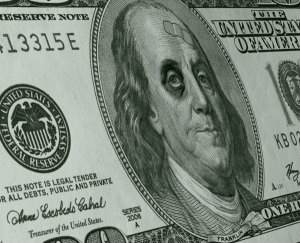
Tuesday August 2: Five things the markets are talking about
The ‘mighty’ dollar continues to bear the weight of last Friday’s poor preliminary U.S GDP data release and a ‘dovish’ Fed, underperforming against a plethora of G20 currencies. Basically, the market is again re-evaluating its timeline for the next potential Fed hike given a slew of weaker-than-expected U.S data.
This morning, the EUR has managed to rally above the psychological €1.12 handle for the first-time in more than a month, while the expected Reserve Bank of Australia (RBA) interest rate cut overnight has failed to weaken the AUD (A$0.7566). The yen has succeeded in printing a new three-weeks high, below the intimidating ¥102.00 to ¥101.47 for the first-time since early July and this after PM Abe’s cabinet approved a package of spending that included ¥13.5 trillion yen in new fiscal measures.
Ahead of the U.S open, the dollar index currently stands at 95.458, having fallen as low as 95.384 last week when it posted its biggest fall in three-months.
1. Yen finding support from JGB’s
Earlier this morning, PM Abe cabinet approved ¥13.5T ($132.04B) in fiscal measures as part of his efforts to revive Japan’s flagging economy, with cash payouts to low-income earners and infrastructure spending. However, the size and structure seems to have left plenty of room for investor disappointment (the headline figure for the package totals ¥28.1T trillion yen, but it includes public-private partnerships and other amounts that are not direct government outlays).
In theory, today’s package should carry with it the risk of inflation and rising domestic share prices – factors that should weaken the yen (¥101.67) – yet, there is little conviction in markets that it will work.
It seems that with the Bank of Japan (BoJ) reluctance to fully support the government program wholeheartedly last week (moderate stimulus package) has reflected in a rise in Japanese bond yields over the past few days. It’s these higher yields that are currently supporting the Yen.
It seems that the markets believe that Governor Kuroda will retreat from the BoJ’s negative interest rate (NIR) policy when its meets in September. The 10-year JGB’s yields have backed up to -0.01%, the best level in nearly five-months, from the -0.295% low seen last week.
Investors should expect Japanese authorities to up the ante in their rhetoric to try and talk their currency down.

2. The Reserve Bank of Australia (RBA) did what was expected
The RBA cut its overnight cash target rate by -25bps to +1.50% (as expected), however, the accompanying statement did not provide a clear guidance on the future rate outlook.
It seems that investor’s interpretation of “little change” may suggest a one-and-done easing plan from Governor Stevens and reason enough for the AUD to rally (A$0.7572).
The RBA reiterated that the global economy continues to grow and that Australia’s growth remains at moderate pace, while near term indicators for domestic employment show modest expansion.
Inflation is also deemed to be “quite low” and is expected to stay that way for some time. RBA did add that growth in lending for housing has slowed this year, which suggests, the likelihood of lower interest rates exacerbating risks in the housing market may have diminished.
Nevertheless, rate ‘bears’ will point to a slowdown in China, Australia’s biggest trading partner and a major consumer of commodities, to be a big enough reason to expect further cuts from the RBA at the end of this year.

3. Global equities under pressure from weak oil and financials
Euro equity indices are trading sharply lower ahead of U.S open as financial stocks solidify further losses in continuation of yesterday’s sentiment. A lackluster trading session in Asia is keeping major indexes depressed.
The Stoxx Europe 600 is down -1.3% in low-volume trade as European banks deepened declines in the aftermath of Friday’s stress-test results. It seems that investors’ concerns continue to mount over the health of Italian banks – the potential need for more capital raising, and a general lack of profitability in lenders across the region.
In the FTSE 100, commodity and mining stocks are also trading sharply lower as WTI again slips below the $40. Weaker commodity prices saw the Dow Jones Industrial Average end a touch lower yesterday for a sixth-consecutive day.
Indices: Stoxx50 -1.7% at 2,919, FTSE -0.8% at 6,640, DAX -1.4% at 10,182, CAC-40 -1.8% at 4,330, IBEX-35 -2.1% at 8,335, FTSE MIB -1.9% at 16,234, SMI -1.1% at 8,039, S&P 500 Futures -0.3%
4. Commodities
Crude prices are currently trading steady ahead of the open stateside, and this despite U.S. futures dropping below $40 for the first time in three-months.
The same argument is weighing on the black stuff, the overhang of crude and refined products continue to threaten to drag prices into the high $30’s a barrel territory.
Ahead of the open stateside, Brent crude has rallied +0.1% to +$42.20 a barrel, while WTI is little changed at +$40.06 a barrel.
Oil prices fell more than -14% last month as the focus shifted from short-term supply issues back to the massive stocks. The world remains awash with crude and the pace of rebalance is so slow that even geopolitical factors (Nigeria) are not enough to offset the fall in prices.
Gold is currently trading at a three-week high on the back of a weaker dollar and uncertain timing for a rate increase by the Fed. Spot gold is trading up +0.40% at $1.358.78, its highest point since July 11.

5. Pound rallies ahead of the BoE
Aside from Friday’s non-farm payroll (NFP) report, Governor Carney at the BoE should be the markets main focus of attention.
On Thursday, the Bank of England (BoE) will deliver its second post-Brexit interest rate announcement and already the market is expecting ‘big’ things from Carney. Futures prices show a +98% chance of a BoE rate cut.
Currently, the pound (£1.3234) is trading higher as if U.K policy makers may potentially disappoint the market. Sterling has rallied despite a report this morning indicating that U.K construction contracted the most last month since the financial crisis.
The pound has fallen -11% outright since the U.K vote on June 23 to leave the EU. CFTC data indicate that the market remains heavily short sterling, which could dampen the potential fall much further ahead of the BoE.
